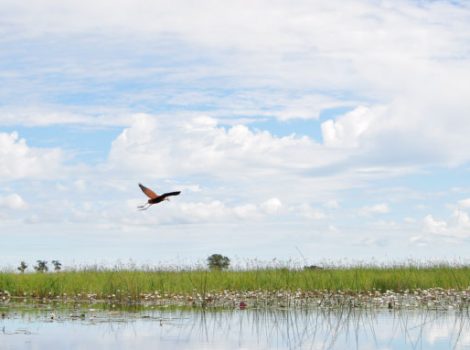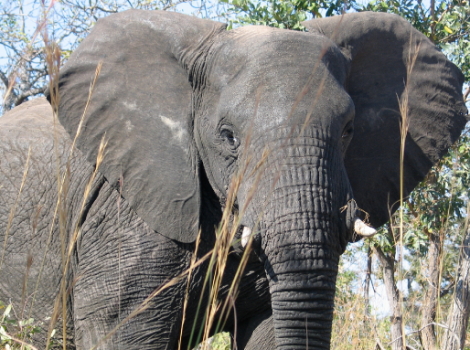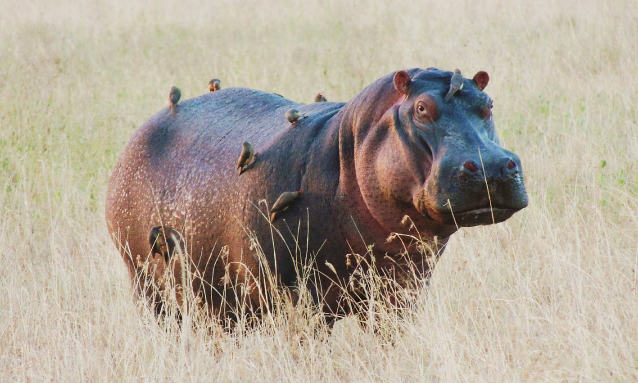
Hippos often get a bad rep because let’s face it; they are known for being extremely foul tempered. What’s worse, the hippo is also responsible for more human fatalities in Africa than any other large animal. This week, however, we want to move away from all the negativity and shine the spotlight on fascinating facts about these gorgeous creatures.
So what kind of creatures are hippos?
A hippopotamus (commonly known as a hippo) is a large, stout animal with smooth skin, stocky legs and a huge, broad-muzzle head. A hippo’s mouth is filled with a set of tusk-like canines and incisors. It has a short, flattened tail tipped with a tuft of black hair.
Hippos are grey-black in colour with a touch of pink around its eyes and ears and underbelly. It is easy to track through the print of its four-toed paw print.
Despite their thick skins, hippos are actually highly sensitive to the heat. To guard against burning, they secrete a reddish fluid often mistaken for blood, which serves as a natural sunscreen. This has led to people erroneously thinking that hippos sweat blood!
In Botswana, hippos can be found in the Okavango, Chobe, Boteti and Limpopo rivers. In the Okavango Delta, they are distributed throughout the northern parts of the country, but during times of floods, they can even be found in the southern parts.
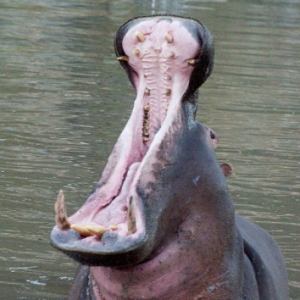 The hippopotamus is one of the most aggressive creatures in the world and is often regarded as one of the most dangerous animals in Africa. If provoked, a hippo can be very dangerous, especially when it is with its young. However, if threatened on land it will often run for water.
The hippopotamus is one of the most aggressive creatures in the world and is often regarded as one of the most dangerous animals in Africa. If provoked, a hippo can be very dangerous, especially when it is with its young. However, if threatened on land it will often run for water.
Red flag! Usually, when a hippo yawns, it is a threatening sign.
Hippos spend most of their day in water; an adult hippo can spend up to 6 minutes under water. They are semi-aquatic mammals and emerge at night onto land to feed.
Hippos enjoy basking in the sun, particularly in the winter months. They socialize in groups of 10-15. Schools of hippo are made up of cows and youth of various ages with a dominant male who takes control of the entire school.
Dominant bulls mark their territories by scattering dung on bushes and other natural objects. Territories are found close to water. Hippo pathways leading to feeding areas from their territories can be identified as a ‘double’ trail made by the dragging of the hippo’s feet on each side. Hippos will travel as far as 30km in search of ideal feeding areas. They make loud grunts and snorts, which they employ as calling sounds.
10 amazing facts about hippos…
1. Pre Historic British creatures – Hippos, along with other megafauna such as lions and elephants, would have been a common sight in pre historic Britain – their remains have been found underneath Trafalgar Square! Their closest living relatives are cetaceans (whales, porpoises, etc.) from which they diverged about 55 million years ago.
2. Pink milk – Yes, it is true the hippo’s milk is bright pink! The reason it’s pink is because the hippo secretes two kinds of unique acids called “hipposudoric acid” and “norhipposudoric acid”. The two acids combine with the white milk, resulting in pink colored milk.
Hippos are the only mammals known to produce pink milk.
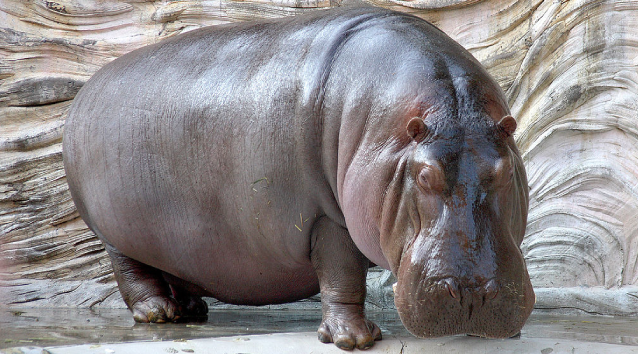
3. For such big animals, hippos don’t eat much – Male hippos weigh anything between 1,600–3,200kg, and females 650–2,350kg. In spite of their size, they eat just 1–1.5 per cent of their body weight every day.
Hippos will travel on land for up to 10km to feed. They spend four to five hours grazing and can consume 68 kg of grass each night. Considering their enormous size, a hippo’s daily food intake is relatively low.
4. The earliest Hippopotamus fossil was found 16 million years ago in Africa – A hippo’s lifespan is typically 30–50 years. Donna the Hippo was the oldest living hippo in captivity. She lived at the Mesker Park Zoo in Evansville, Indiana in the US until her death in 2012 at the age of 61 (or 62, depending on various sources).
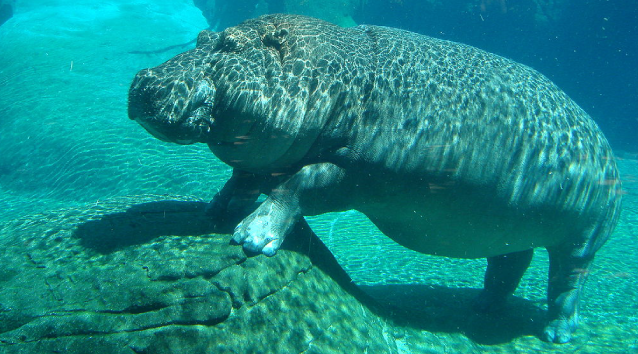
5. For semi-aquatic animals, hippos don’t swim – Hippos sink in water. They run along the river bottom instead of swimming.
6. They spread muck to mark their territory – Hippos swish their tails back and forth as they defecate, scattering their droppings in order to mark their territory.
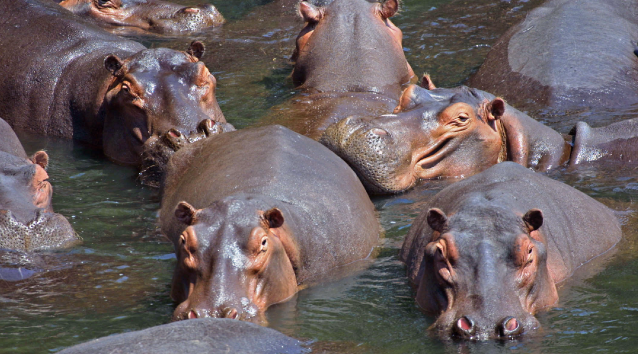
7. Ivory for teeth – Within two years of the international ban on trade in elephant ivory, there was sadly a 530 percent hike in the annual export of hippo teeth. The canines measure upwards of 50cm in length and can grow up to 1 foot!
The texture of the teeth is similar to that of elephant tusks, meaning they are also made up of ivory. George Washington’s false teeth were made up of ivory carved out of hippos’ teeth!
8. Four stomachs are better than one – A hippo’s stomach has four chambers in which enzymes break down the tough cellulose in the grass that it feeds on. However, because hippos do not chew the cud, they are not true ruminants like antelopes and cattle.
9. Hippos can’t jump – Despite its stocky shape and short legs, it can easily outrun most humans. Hippos have been clocked at 30 km/h over short distances! Hippos can’t jump, though.
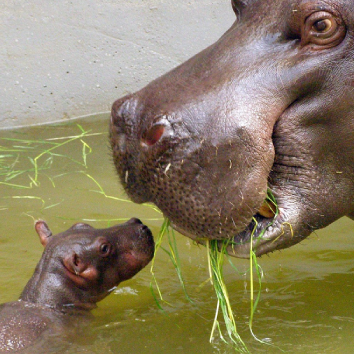 10. Not the prettiest but picture perfect!
10. Not the prettiest but picture perfect!
While some people may feel that hippos are not the prettiest or cutest animals out there, I’m sure we can all agree they’re absolutely fascinating to look at. These majestic animals that look like they belong in an era long gone also picture amazingly well. Even as unpredictable as they are, whenever I see one, I can’t help but stare at it in complete and utter awe.
Sources: onekindplanet.org, botswanatourism.co.bw
Video courtesy of Kariega YouTube Channel
Images courtesy of – belgianchocolate, cloudzilla, Jon Connell, Kabacchi & Robur.q

